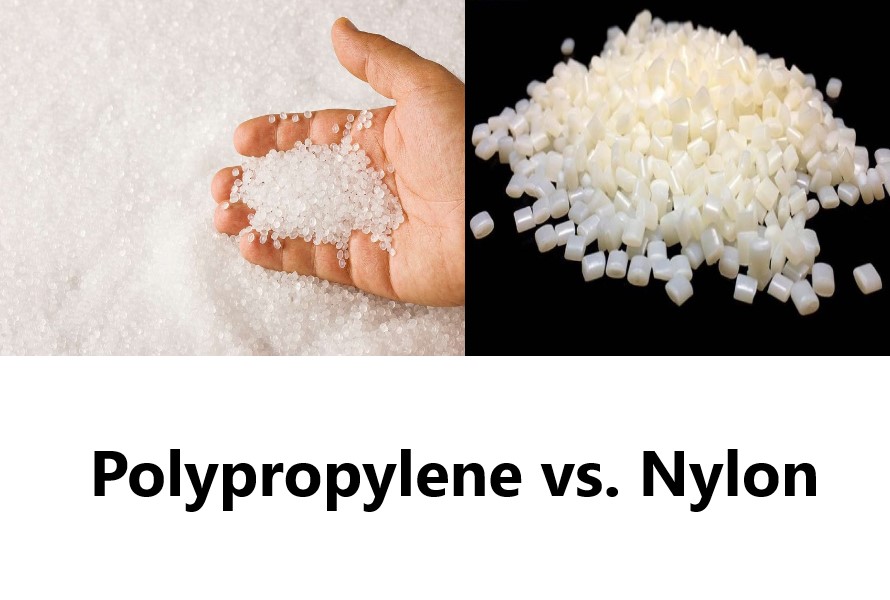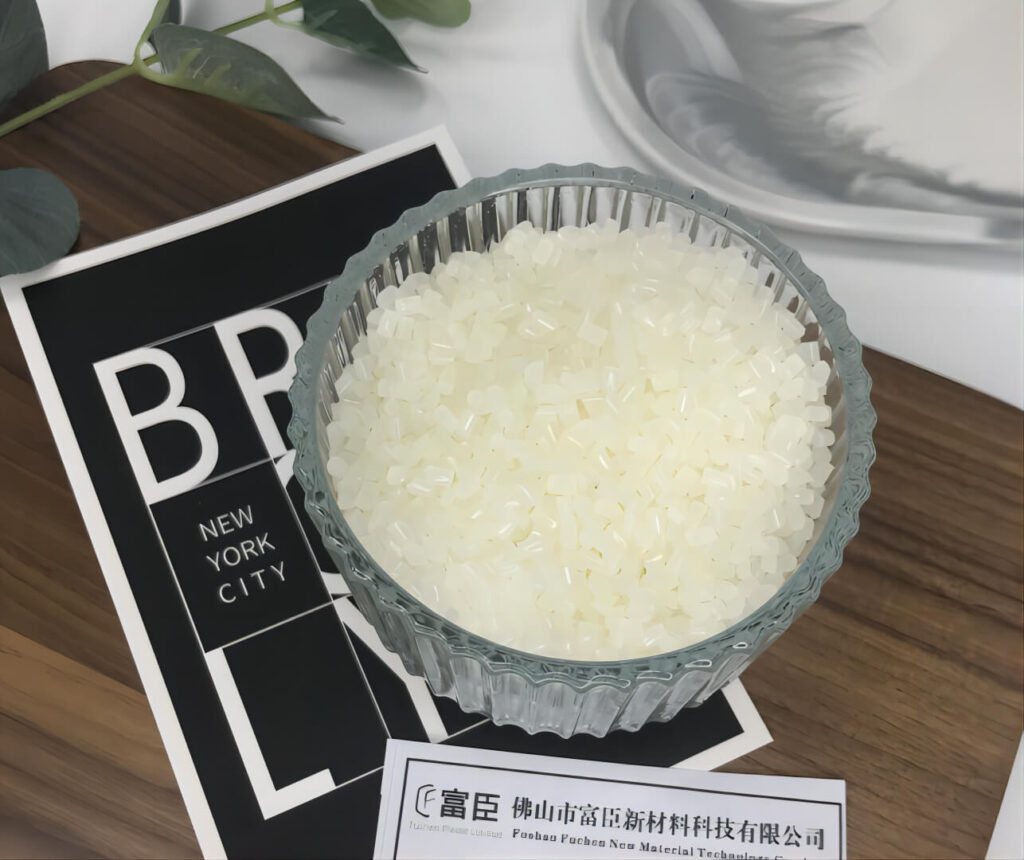A Nylon vs PP bevezetése
A gyártás és a terméktervezés során a megfelelő anyag kiválasztása jelentős különbséget jelenthet a teljesítmény, a költségek és a fenntarthatóság szempontjából. A különböző iparágakban leggyakrabban használt két anyag a következő nejlon és PP. Mindkettő sokoldalú, tartós és széles körben alkalmazott, mégis különböző tulajdonságokkal rendelkeznek, amelyek alkalmassá teszik őket bizonyos alkalmazásokhoz. Ezeknek a különbségeknek a megértése kulcsfontosságú a megalapozott döntések meghozatalához a gépészet, a textilipar, a csomagolás és azon túl. Ez az útmutató a nejlon és a PP alapos összehasonlítását kínálja, kiemelve legfontosabb tulajdonságaikat, felhasználási területeiket, valamint a választás során figyelembe veendő tényezőket.

Mi az a nejlon?
Az először az 1930-as években kifejlesztett nejlon a poliamidok családjába tartozó szintetikus polimer. Széles körben elterjedt a szilárdság, a rugalmasság és a kopásállóság kiváló egyensúlya miatt. A nejlonnak különböző típusai léteznek, a következőkkel Nylon 6 és Nylon 66 a legjelentősebbek. A Nylon 66 például a Nylon 6-hoz képest valamivel magasabb olvadásponttal és magasabb hőmérsékleten jobb szilárdsággal rendelkezik, így alkalmasabb az igényes alkalmazásokhoz.
A nejlon jellemzői és tulajdonságai:
- Tartósság: A nejlon szilárdságáról és kopásállóságáról ismert, így ideális anyag nagy igénybevételnek kitett alkalmazásokhoz, például ipari alkatrészekhez és textíliákhoz.
- Rugalmasság: Szívóssága ellenére a nejlon jó rugalmasságot biztosít, így alkalmas olyan termékekhez, amelyek bizonyos fokú rugalmasságot igényelnek, mint például a ruházat vagy a horgászzsinórok.
- Nedvesség ellenállás: A nejlon nedvességet vesz fel a levegőből, ami idővel befolyásolhatja mechanikai tulajdonságait. A nejlonkészítmények fejlődése azonban javította a nedvességgel szembeni ellenálló képességét a különböző felhasználási célokra.
A nejlon gyakori felhasználása az iparágakban:
A nejlont széles körben használják autóalkatrészekben, textíliákban, fogyasztási cikkekben és egyéb termékekben. A szilárdság és a rugalmasság kombinációja miatt kedvelt anyag a tartósságot és teljesítményt igénylő iparágakban, például fogaskerekek, csapágyak, kötelek, sőt, orvosi eszközök gyártásánál is.
Mi a polipropilén (PP)?
A polipropilént vagy PP-t először az 1950-es években szintetizálták, és azóta a világ egyik legszélesebb körben gyártott műanyagává vált. A PP egy hőre lágyuló polimer, amely könnyű és vegyszerálló tulajdonságairól ismert, így a csomagolástól az autóipari alkatrészekig számos ágazatban népszerű választás.
A PP tulajdonságai és jellemzői:
- Könnyű súly: A PP egyik legjelentősebb előnye az alacsony sűrűsége, ami más anyagok, például a nejlon könnyebb alternatívájává teszi. Ez a tulajdonság különösen előnyös olyan alkalmazásokban, ahol a súlycsökkentés kritikus fontosságú, mint például a csomagolás és az autóipari alkatrészek.
- Kémiai ellenállás: A PP kiválóan ellenáll a vegyszerek széles skálájának, beleértve a savakat, lúgokat és oldószereket. Ez teszi ideális anyaggá a háztartási tisztítószerek, gyógyszerek és ipari tartályok csomagolásához.
- Alacsony nedvességfelvétel: A nejlontól eltérően a PP minimális nedvességet szív fel, ami biztosítja, hogy mechanikai tulajdonságai párás környezetben is stabilak maradnak.
A PP alkalmazásai különböző ágazatokban:
A PP-t gyakran használják a csomagolóiparban, különösen élelmiszer-tartályok, palackok és kupakok esetében, mivel nem mérgező és könnyű. Gyakran megtalálható háztartási cikkekben, autóalkatrészekben és textíliákban, például szőnyegekben és kárpitokban is.
Nylon vs PP: közvetlen összehasonlítás
A nejlon és a PP összehasonlításakor fontos megvizsgálni a szerkezeti különbségeket, és azt, hogy ezek hogyan befolyásolják a teljesítményt a különböző alkalmazásokban.
- Szerkezeti különbségek: A nejlon poliamid, azaz amidkötéseket tartalmaz, míg a PP poliolefin, amely szén- és hidrogénatomokból áll. Ez az alapvető különbség azt eredményezi, hogy a nejlon erősebb és rugalmasabb, mint a PP, míg a PP könnyebb és kémiailag inert.
- Teljesítménytényezők:
- Erősség: A nejlon általában erősebb, mint a PP, különösen a szakítófeszültségek elviselésében, így jobb választás nagy igénybevételű alkalmazásokhoz, például mechanikai alkatrészekhez.
- Rugalmasság: A nejlon nagyobb rugalmassággal is rendelkezik, ami lehetővé teszi, hogy nyúlás vagy deformáció után visszanyerje eredeti alakját, ezért használják textíliákban és más, rugalmasságot igénylő alkalmazásokban.
- Rugalmasság: A PP, bár nem olyan erős, mint a nejlon, ellenállóbb a fáradással szemben, és jobban megőrzi alakját tartós igénybevétel esetén, így ideális olyan elemekhez, mint a zsanérok vagy a csomagolás.
- Költségekkel kapcsolatos megfontolások: Általában a PP a nejlonhoz képest költséghatékonyabb, ami vonzóbbá teheti a nagyméretű alkalmazásoknál, ahol a költséghatékonyság elsődleges szempont.
- Környezeti hatás: Sem a nejlon, sem a PP nem biológiailag lebomló, de mindkét anyag újrahasznosítható. A PP az egyszerűbb kémiai szerkezete miatt némileg előnyben van a könnyű újrahasznosíthatóság tekintetében, de mindkét anyagnak folyamatos környezetvédelmi kihívásokkal kell szembenéznie a hulladékkezelés terén.
| Ingatlan | Polipropilén | Nylon |
| Szakítószilárdság | 25-40 MPa | 50-90 MPa |
| Felület keménysége | 92 HRR (Rockwell R) | 100 - 120 (Rockwell R) |
| Üzemi hőmérséklet | <180 °F | -70 és 250 °F között |
| Olvadási hőmérséklet | 327 °F | 374 - 460 °F |
| Ütéstűrés | Nagy ütésállóság | Nagy ütésállóság (10-szer nagyobb, mint az ABS) |
| Kémiai ellenállás | Nagyfokú kémiai ellenállás - képes elviselni a hígított lúgokat és savakat | Jó kémiai ellenállás - beleértve az olajokkal, benzinnel, üzemanyagokkal, ásványi szeszekkel és néhány alkohollal szembeni ellenállást. |
| Vízfelvétel | Majdnem vízálló. 24 órás áztatás után súlyának mindössze 0,01%-nyi vizet szív magába. | 0,30 - 7,0% tömeg szerint |
| Újrahasznosíthatóság | Igen. 20-30 évbe telik, amíg a PP biológiailag lebomlik. | Igen. A nejlon nem biológiailag lebomló. |
Választás a nejlon és a PP között
A nejlon és a PP közötti választás számos tényezőtől függ, beleértve az alkalmazás speciális követelményeit, a költségkorlátokat és a környezetvédelmi megfontolásokat.
- Figyelembe veendő tényezők:
- Alkalmazási igények: A nagy szilárdságot és rugalmasságot igénylő alkalmazásokhoz gyakran a nylon az előnyben részesített választás. Másrészt, olyan alkalmazásoknál, ahol a könnyű súly és a vegyi anyagokkal szembeni ellenállás kritikus, a PP a jobb választás.
- Költség vs. teljesítmény: Ha szűkösek a költségvetési korlátok, a PP vonzóbb lehet alacsonyabb költségei miatt. A nagyobb teljesítményt igénylő alkalmazások esetében azonban indokolt lehet a nejlon többletköltsége.
- Esettanulmányok:
- Nylon az ipari alkatrészekben: Az autóiparban a nejlont gyakran használják olyan alkatrészekhez, mint a fogaskerekek és csapágyak, ahol a szilárdság és a kopásállóság kritikus.
- PP a csomagolásban: A PP a csomagolás egyik legmegfelelőbb anyaga, különösen az élelmiszer- és gyógyszeriparban, ahol könnyű súlya és vegyi ellenállása kulcsfontosságú.
- Szakértői ajánlások: A szakértők gyakran ajánlják a nejlont mechanikai alkalmazásokhoz, a PP-t pedig csomagoláshoz vagy vegyszertároláshoz, mivel a két anyag erősségei eltérőek.
GYIK a Nylon vs PP-ről
- A nejlon erősebb, mint a PP?
Igen, a nejlon általában nagyobb szakítószilárdsággal rendelkezik, mint a PP, így jobban megfelel a nagy igénybevételű alkalmazásokhoz. - Melyik anyag jobb kültéri használatra?
A PP ellenállóbb az UV- és nedvességtartalom lebomlásával szemben, így jobb választás kültéri alkalmazásokhoz. - Újrahasznosítható a PP?
Igen, a PP-t széles körben újrahasznosítják, és a nejlonhoz képest gyakrabban fogadják el az újrahasznosítási programokban. - Használható-e nejlon élelmiszercsomagoláshoz?
Míg a nejlont néha használják az élelmiszercsomagolásban, különösen a vákuumzáras zacskókban, a PP-t könnyebb súlya és alacsonyabb költsége miatt gyakrabban használják.
Következtetés a nejlon vs PP
Összefoglalva, a nejlon és a PP két széles körben használt anyag, amelyek különböző célokat szolgálnak a különböző iparágakban. A nejlon kiemelkedik szilárdságával, rugalmasságával és tartósságával, így ideális ipari és mechanikai alkalmazásokhoz. Másrészt a polipropilén könnyű súlya, vegyszerállósága és költséghatékonysága miatt a csomagolás és a fogyasztási cikkek számára a legmegfelelőbb anyag. Az egyes anyagok egyedi tulajdonságainak ismerete lehetővé teszi a gyártók, mérnökök és tervezők számára, hogy megalapozott döntéseket hozzanak projektjeik igényei alapján. Végső soron a nejlon és a PP közötti választás olyan tényezőktől függ, mint az alkalmazási követelmények, a költségvetés és a környezetvédelmi megfontolások, de mindkét anyag továbbra is fontos szerepet fog játszani a modern gyártásban és tervezésben.

